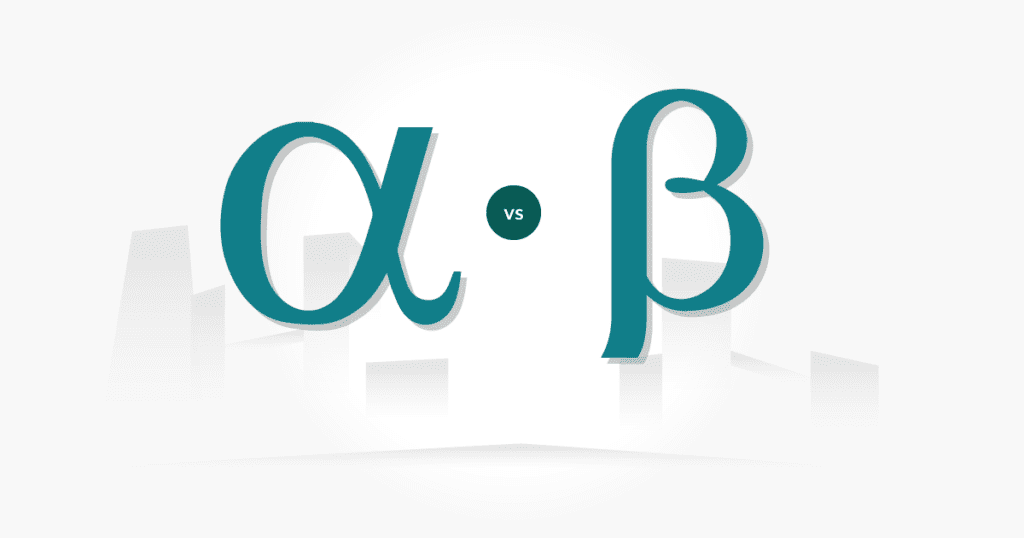Many people ask what the difference between Alpha and Beta testing is? Both have important parts to play in bringing new or improved software to market. While the questions they ask serve different purposes, they are both forms of acceptance testing. Alpha and Beta testing differ in a number of ways, not least with the stage in development when they are implemented. Let’s take a look at both to learn more about them.

What is Alpha Testing?
Alpha Testing is a method used for identifying bugs or issues before a software is released to public. Generally, employees within the organization such as developers or business analysts, simulate the actions of real users, working through the kinds of tasks that the average user would demand of the software under test.
Because Alpha testing is conducted at the point where development is mostly complete but the product has not yet been released to the public, it is still possible to make small or medium changes and deal with any bugs that may still be present. Using black box and white box testing techniques, the process takes place at the development site, making it easier for the developers to monitor feedback as they receive it, then make any changes that are found to be necessary. After the software has successfully passed through Alpha testing, the organization will want to test the product through a limited, or Beta, release and embark on Beta testing.
How Useful is Alpha Testing?
Alpha Testing allows genuine insight into how smoothly – or otherwise – the newly developed or upgraded software works. In-house users, normally from within the tech department, simulate the kinds of procedures that real world users would ask of the product. By performing this level of testing before any kind of a release, errors related to design as well as functionality can be detected and then corrected prior to release. Alpha Testing makes it possible for developers to be as sure as possible at this stage, that they will be able to deliver stability, a high-quality service, and complete functionality.
What is Beta Testing?
Beta Testing is the final testing phase in a product’s pre-launch lifecycle and it’s where product meets public for the first time before the full launch. The testers used are likely to be early adopters from a limited Beta release or through an agency inviting a number of people to take part to take part for a small fee or incentive, who fit the desired profile.
Beta Testing is implemented after any errors and omissions discovered by Alpha Testing have been corrected, and serves as a double-check for anything missed. By bringing a group of ordinary users into Beta Testing, the team can learn how the product performs under the individual demands placed upon it by target purchasers who will have a different mindset to the tech-savvy Alpha Testers.
The invited target users will try out the product, often guided by prompts from a test monitor. These usually follow the lines of “If you would like to achieve x, how would you use the product, app or website to accomplish it?”. In effect, this will be real users testing a real product in a real environment. Therefore, this group representing potential customers are able to provide input about the design, usability, and the functionality of the product. These inputs can be significant to the product’s eventual success. Moreover, Beta Testing decreases failure risks and offers better product quality through customer validation.
How Useful is Beta Testing?
Placing the product in the hands of a set of targeted end users before a public release offers great advantages over sending to market only having been approved by industry people. Issues such as crashes and confusing app flow can be noticed with the help of Beta Testing. This extra layer of testing will diminish the possibility of ultimate product failure as a result of a lack of customer validation. Acting on customer feedback while not under market scrutiny will lead to better product quality as a result of customer feedback. Another advantage is that you will have collected real user data which can be used for marketing, strategic product optimization and comparison.
Bite-sized differences between Alpha and Beta Testing
- Alpha Testing is performed on site by those involved in creating the product
- Beta Testing is done by ordinary people who could be potential customers
- A laboratory or testing environment is used for Alpha Testing
- No special environment is needed for Beta Testing
- White box testing and black box testing are used in Alpha Testing
- In Beta Testing, it’s black box testing or functional testing
- Alpha Testing is performed before any launch of the product
- Beta is the last testing procedure before the full launch
- Alpha Testing is ensuring the quality of the product before Beta Testing
- Beta Testing gathers input and focuses further on quality to double-check the product’s readiness for a public release

Summary
Alpha and Beta Testing play slightly different roles but have equal importance in the finalising of a software product’s quality. Alpha testing should provide enough scrutiny for there not to be any bugs identified during the Beta testing phase. Organizations will find Beta Testing highly useful as a feedback or a forum for their software product before they release it to the general public.

